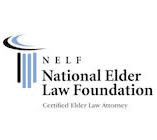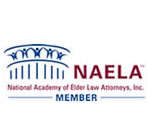A recent story in the Los Gatos Patch illustrates that elder abuse can occur anywhere, even here in our beautiful little town of Los Gatos in the heart of the highly educated Silicon Valley. It is a growing problem everywhere. Certainly, we don’t know why the abuse happened in the particular case that was reported or everything about why it ever occurs. And, we are struggling as a society with efforts to stop its spread. But, we do know that help is available for victims. Concerned people can spot the warning signs of a possible problem and make a call for help if an elder is in need of assistance. We can start by knowing that elder abuse includes:
Physical abuse, which is the type of abuse we most commonly recognize. It is the use of physical force that results in bodily injury, physical pain, or impairment to a senior. Examples of physical abuse include acts of violence (such as hitting, beating, pushing, shoving, shaking, slapping, kicking, pinching, and burning), as well as inappropriate use of drugs and physical restraints, force-feeding, and physical punishment of any kind.
Sexual abuse, which is non-consensual sexual contact of any kind. Sexual contact with any person incapable of giving consent is also considerer sexual abuse and includes, but is not limited to, unwanted touching, all types of sexual assault or battery, such as rape, sodomy, coerced nudity, and sexually explicit photographing.
Emotional or psychological abuse, which is the infliction of anguish, pain, or distress through verbal or nonverbal acts. Examples of this type of abuse includes verbal assaults, insults, threats, intimidation, humiliation, and harassment. It also can include treating an older person like an infant; isolating an elderly person from his/her family, friends, or regular activities; and giving an older person the “silent treatment.”
Neglect, which is the refusal or failure to fulfill any part of a person’s obligations or duties to an elder, is also abuse. It typically means the refusal or failure to provide an elderly person with such life necessities as food, water, clothing, shelter, personal hygiene, medicine, comfort, personal safety, and other essentials included in an implied or agreed-upon responsibility to an elder. It also includes the failure of a person who is responsible for the elder’s finances to pay for necessary home care services and the failure on the part of a care-provider to provide necessary care.
Abandonment, which is the desertion of an elderly person by an individual who has assumed responsibility for providing care for the elder, or by a person with physical custody of an elder.
Financial or material exploitation is the illegal or improper use of an elder’s funds, property, or assets. Examples include, but are not limited to, cashing an elderly person’s checks without authorization or permission; forging an older person’s signature; misusing or stealing an older person’s money or possessions; manipulating, coercing or deceiving an older person into signing documents such as contracts, trusts and a will.
Self-neglect is characterized as the behavior of an elderly person that threatens his/her own health or safety, such as refusal or failure to provide himself/herself with adequate food, water, clothing, shelter, personal hygiene, proper medication, and safety precautions. Certainly we may inflict such abuse on ourselves as our personal choice. However, when the abuse is the result of incapacity, the court can step in and appoint a conservator to prevent further such self-neglect.
If you are worried about an elder in your family or a older (or other dependent adult) friend or neighbor in Santa Clara County, you can contact Adult Protective Services (408-975-4900 or 1-800-414-2002) to make a report, call 911 if you think it is an emergency situation, or seek the advice of a local elder law attorney, such as our firm. We can also help seniors protect themselves from future abuse through pre-planning. Contact us if you have a question or want to discuss your circumstances.
* The information contained in this Blog is intended for general information and educational purposes only and does not constitute legal advice or an opinion of counsel.




